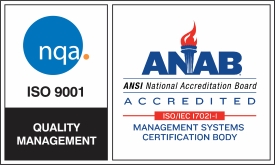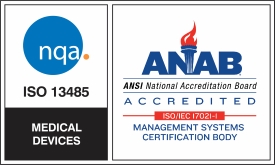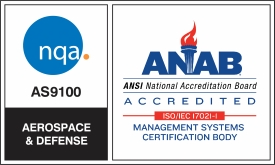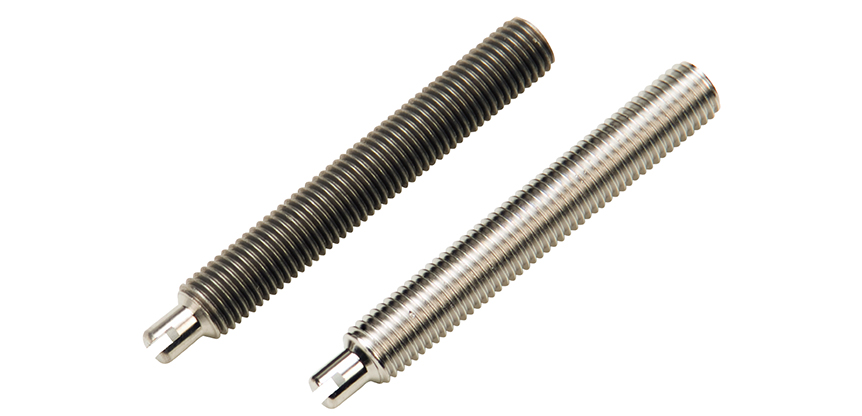During our lunch and learn sessions, many customers are interested in what they can achieve in terms of Ra (Roughness Average) improvement with electropolishing.
In the microfinishing chart displayed here, you can see a sliding scale in terms of material removal to Ra improvement on the left column.
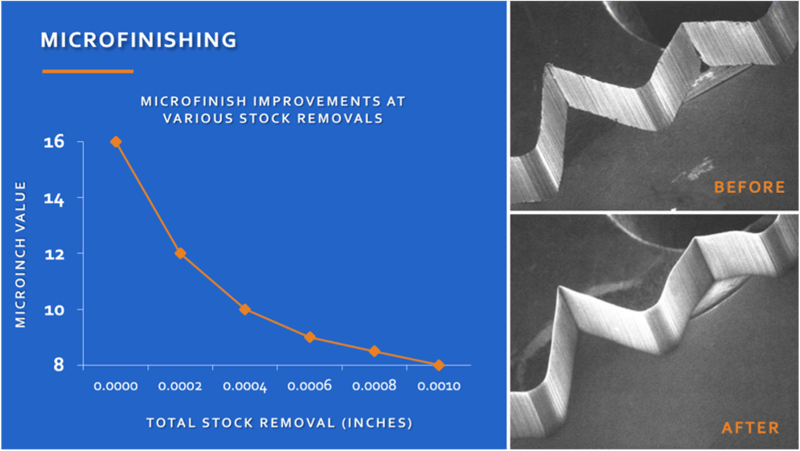
Several key things to note related to the diagram:
- Electropolishing performs best when we begin the process with a 32Ra or better
- Electropolishing typically tops out at 4Ra in terms of microfinish improvement
- The electropolishing material removal process can be controlled by +/- .0002" total material for most alloys or half that per surface
- .001" total material removal or .0005" per surface should achieve approximately a 50% improvement in the microfinish.
We process many parts that are higher than a 32Ra for many different industries. In some cases, the microfinish improvement will be 30-40% if we are beginning the process with a rougher starting point. For instance, if we start at 100Ra, electropolishing will improve the Ra but will not overcome some of the higher peaks due to the fact that we are only typically removing around .001" total material.
During our sample process, we work with our clients’ engineers to determine the appropriate stock removal. In some cases, we are removing small, medium and high target amounts of material so our customers can compare and contrast the different finishes. All engineering information is captured in our ERP system so that we can lock in the precise requirements for the preferred finish.
Combining Mechanical Polishing with Electropolishing
Our coupon samples pictured below illustrate the possibilities of mechanical polishing used in conjunction with electropolishing. In industries like pharmaceutical and semiconductor manufacturing, electropolishing is utilized mainly to remove particulates and contaminants introduced during the manufacturing process. In addition, enhanced corrosion resistance and an improved chrome-to-iron ratio are key factors influencing the decision to adopt electropolishing as the final step in metal finishing.
In the picture below, you can see the improvement in Ra after electropolishing vs. specific mechanical finishes when applied to 316 Stainless Steel. Electropolishing reduces the mechanical work required and, in many cases, reduces the overall cost to finish parts.
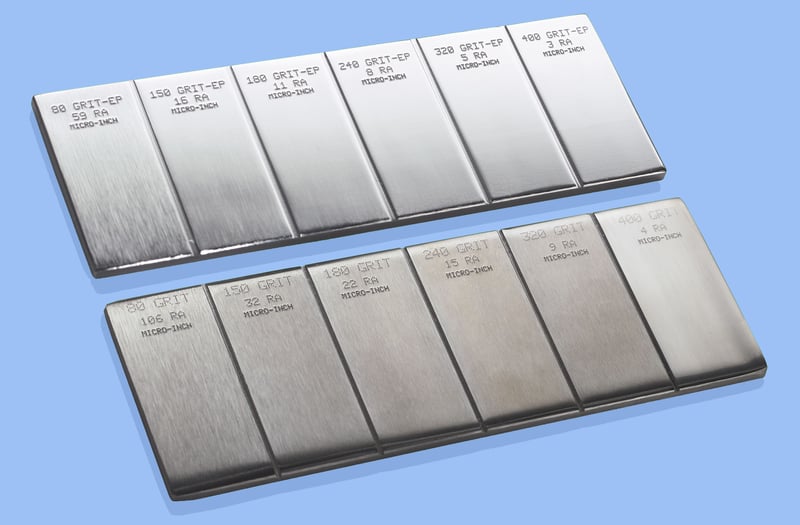
Electropolishing Results after Mechanical Polishing
Top row: Post-Electropolishing / Bottom row: Mechanical Polishing
In addition, electropolishing removes the fine mechanical polishing lines that are sometimes a challenge to remove through other processes.
At Able Electropolishing, we have developed our processes over decades of innovation in collaboration with a diverse array of industries and applications. We carefully prototype and customize the process for each part, from racking to chemistry and timing. Our investment in robotic automation also helps ensure consistent results. Robots are used to submerge the racks in the tank and remove them during processing at the precise time based on material removal requirements in our ERP system.
Give us a call at (888) 868-2900 or click on the link below to learn more about what electropolishing can do to improve the surface results for your metal parts.

